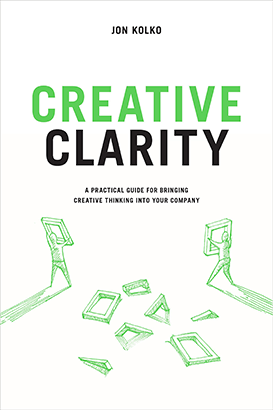This is from 2016 | 5 minute read
Strategic Patterns
Imagine:
You are sitting in a management meeting, and your team is talking about your strategic direction. The conversation is focused on diminishing revenue. A single competitor is claiming market share; their product does less, but because it's being heralded as simple and easy to use, it's gaining traction. You could drop features too, except that you have customers who have grown accustomed to the vast feature set you have. The general tone of the conversation is fear and fretting - you hear over and over, "We just need to do something about this", but there's no action being taken.
Sound familiar?
It's the innovator's dilemma, a well-known phenomenon made popular by Clay Christianson. The basic premise is that a simpler product will be ignored by a market leader because it has such a small feature set and so few customers. And over time, the new company will grow and grow, until it's too late to ignore them - but at that point, the company is on its way to disrupting the entrenched and embattled incumbent.
Try this one:
Your team is discussing how apps will be built on top of a platform. When enough apps are in use, the platform will have a huge amount of data, which can then be monetized. There's hand-waving at what the apps are, and similar hand-waving at what the specific monetization strategy of the data is.
If that one sounds familiar, it's because that's the basic premise of a "big data" play: a rich data set can be used to drive analytics, insights, and new business opportunities.
These are strategy patterns, strategic guides that have emerged across verticals and in nearly every sector. Here's a few more:
- The connected products pattern, where a company tries to drive brand lock-in in order to establish a "better together" product strategy, just like iTunes and the Apple ecosystem.
- The 360 view of the customer pattern, where consistent product touchpoints create a holistic picture of spending and behavioral patterns, which can then be used to personalize service and better cater to the individual
- The M&A to drive non-organic growth pattern, where a company pulls non-product levers in order to increase revenue or add product capabilities to a portfolio
- The product/project pattern, where a company builds unique (bespoke) solutions for a single customer and attempts to back into a product-focus from a market-focus
There are some tried and true patterns:
- The Good/Better/Best pricing of appliances like microwave ovens or refrigerators
- The feature "one up" of Netscape and Internet Explorer in the 90s
- The packaging of features, like the "alloy wheels and sunroof" conundrum of vehicle purchasing (why can't you get a car with just a sunroof?)
And there are some new ones:
- Collaborative consumption, to be the "Uber of X" - the Uber of Healthcare, the Uber of Shopping
- The all you can eat content model, where a large data set (of music, or books, or other digital assets) is made available in its entirety for a monthly or yearly fee
- The network effect, a phrase made popular by Fred Wilson at Union Square Ventures to describe the exponential growth that occurs when people see value in sharing a service with their friends
- The just in time delivery model for consumer items, like Favor
Patterns aren't unique to product strategy. Christopher Alexander developed a pattern language for architectural design problems, one that almost acts as a language or grammar for thinking about creative spaces. Computer scientists are used to leveraging patterns in object oriented development. Pattern recognition is a key part of how we make sense of the world around us; it's fundamental to getting through life.
Strategy patterns are often the substance of product discussions, as they act as prompts to escape inertia. They are starting points. But instead of being the start of the strategy, they often become the full extent of the strategy. They are outlines that are never filled in - the problem remains out of focus, because the strategies ignore details. The unique qualities of a given business problem are more complicated than a pattern, and these unique qualities are buried in the details. Speaking of "M&A to drive non-organic growth" is so broad and vague as to be inactionable; particularly at an executive management level, this fleeting language is meaningless.
The patterns are misleading, because they lead to creative complacency. "We've seen this before, and we know how to do it" misses the reality that you haven't actually seen this before. To upend creative compliancy requires creative clarity: to bring into focus the problem's unique characteristics, its twists and turns. Creativity leads to a specific future that doesn't exist yet, one that is grounded in historic patterns only enough to feel familiar. Creative clarity is about:
- Setting a vision of the future based on product and service experience. Describe what people will actually do with your creation.
- Driving alignment around a story. A good story depends on detail to feel real and to come to life. Bring the opportunity into focus with a narrative.
- Leveraging strategic patterns only in the way we might use "Drama" or "Comedy" to select a movie: as a broad categorical container, but not as a defining characteristic.
- Seeking out the unique qualities of a problem, and celebrating those unique qualities as the soul of the strategy
Executives are in charge largely because of their rich experiences. But counterintuitively, despite all the benefits of a long and successful career, tacit knowledge often leads to an expert blindspot. That blindspot is a feeling of confidence in repetition. To overcome this blindspot, focus on the details by assuming you don't know. Embrace the unique qualities of your business problem in order to bring an opportunity into creative clarity.
